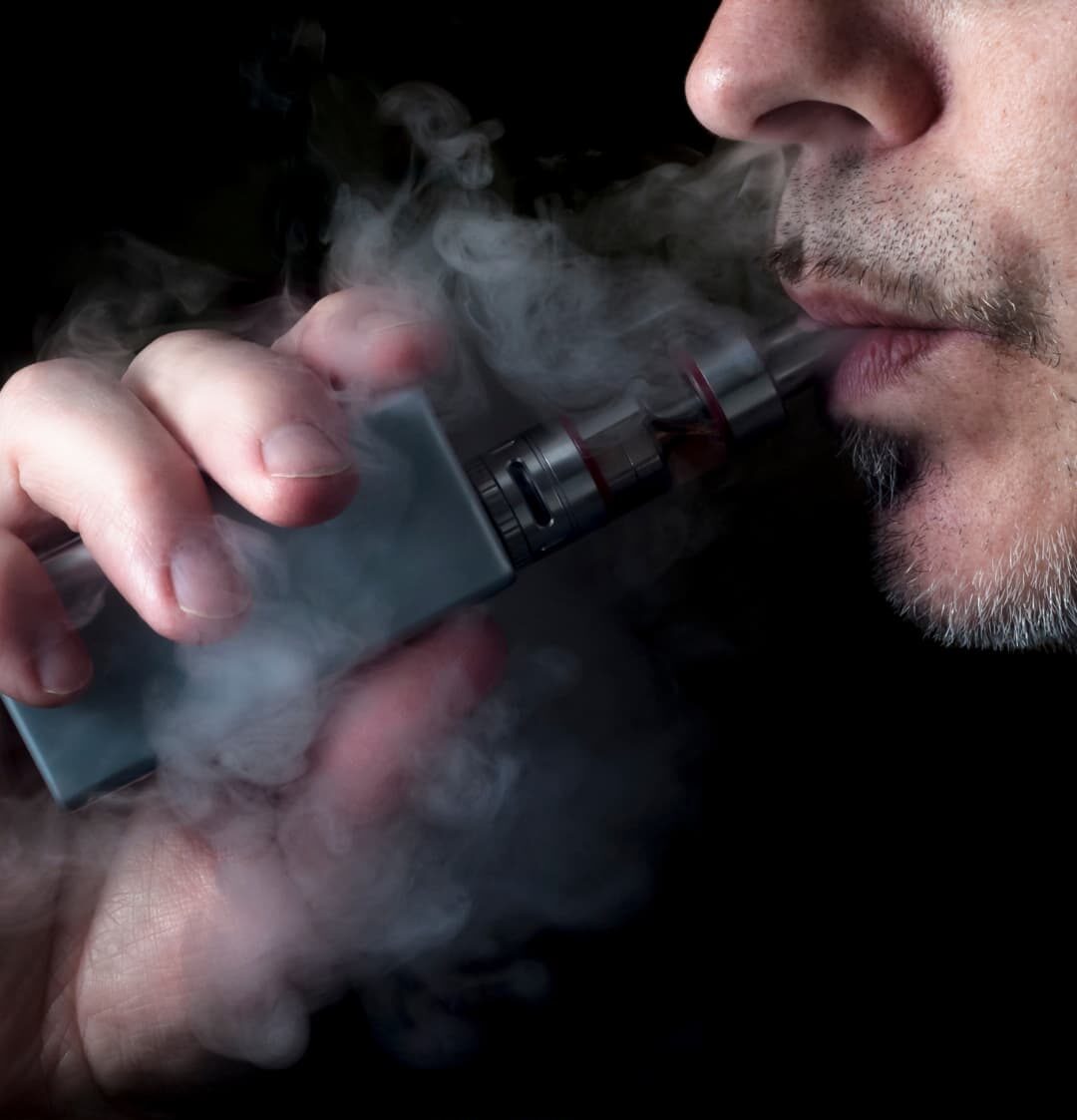De chica crecí rodeada de gente que fumaba a nuestro alrededor. Era normal: los adultos fumaban y los niños simplemente estábamos cerca. Recuerdo que cuando jugábamos a “la mamá y el papá” o a “la agencia de viajes”, usábamos los colores como si fueran cigarrillos.
A los 14 años fumé por primera vez con una amiga. Estábamos en un centro comercial con ventanas enormes donde podíamos ver lo “cool” que nos veíamos. En mi juventud ya se sabía que fumar era malo, pero seguía siendo símbolo de rebeldía y estilo.
Fumé durante más de 15 años. Cuando nació mi segunda hija, decidí dejarlo por completo. Fue difícil, porque el cigarro me acompañaba en todo: al acostarme, al levantarme, en el baño, en la universidad, en los restaurantes, en las fiestas y hasta en los velorios. Era el “amigo fiel”. Pero tuve que escoger, y elegí parar.
Mi hermana murió de cáncer de boca, entre otras complicaciones. Sin embargo, a pesar de eso, después de su muerte, caí en una tristeza profunda y, volví a refugiarme en el viejo amigo. Al principio solo me acompañaba en el almuerzo y en la noche. Pero cada vez sentía que lo necesitaba más, y cuando no lo tenía, la ansiedad me invadía.
Felizmente, esa segunda “amistad” duró pocos meses. Esta vez elegí el deporte y mi salud.
Hoy veo con preocupación cómo el “viejo amigo” se ha disfrazado en nuevas formas: vapeadores, snus, cigarrillos electrónicos. Cada vez más adolescentes se inician en el vapeo pensando que es inofensivo, que “no pasa nada”, o que es simplemente parte de ser aceptado.
Pero detrás del vapor dulce y las luces de colores, se esconde la misma trampa: la falsa compañía que promete aliviar la ansiedad, la tristeza o el aburrimiento, y que en realidad termina atándolos silenciosamente.
Todos tenemos momentos de ansiedad, tristeza, soledad o vulnerabilidad. Es en esos momentos cuando buscamos soluciones inmediatas: alcohol, tabaco, vapeo, hierba, entre otros.
¿Y si, en lugar de hacernos daño, aprendiéramos a gestionar esa ansiedad de otra manera? Hacer deporte, llamar a un amigo, tomar una ducha fría, respirar profundo, pedir ayuda profesional para transitar esos momentos… Comunicar para sanar y avanzar es un acto de humildad y compasión con uno mismo. No es una pérdida, es un verdadero triunfo.
A esos padres, madres y cuidadores:
Nuestros adolescentes necesitan menos juicios y más acompañamiento consciente. Necesitan saber que no están solos para enfrentar la presión social, la ansiedad y el dolor. Hablemos con ellos, escuchemos de verdad, eduquemos con el ejemplo. El amor y la presencia son los verdaderos “amigos fieles” que sí salvan vidas.
“El primer paso hacia la grandeza es ser honesto con uno mismo.”
— Séneca
As a child, I grew up surrounded by people who smoked around us. It was normal: adults smoked, and children were simply nearby. I remember that when we played “house” or “travel agency,” we used colored pencils as if they were cigarettes.
At 14, I smoked for the first time with a friend. We were at a shopping mall with huge windows where we could see how “cool” we looked. Even back then, it was known that smoking was bad, but it was still a symbol of rebellion and style.
I smoked for over 15 years. When my second daughter was born, I decided to quit for good. It was hard because cigarettes accompanied me in everything: when going to bed, waking up, in the bathroom, at university, in restaurants, at parties, and even at funerals. It was the “loyal friend.” But I had to choose — and I chose to stop.
My sister died from mouth cancer, among other complications. Still, despite that, after her death, I fell into a deep sadness and went back to seeking refuge in the old friend. At first, it only accompanied me during lunch and at night. But little by little, I felt like I needed it more and more, and when I didn’t have it, anxiety took over.
Fortunately, that second “friendship” lasted only a few months. This time, I chose sports and my health.
Today, I watch and see with concern how the “old friend” has taken on new forms: vapes, snuss, electronic cigarettes. More and more teenagers are starting to vape, thinking it’s harmless, that “nothing happens,” or that it’s just part of being accepted.
But behind the sweet vapor and colorful lights hides the same trap: the false companionship that promises to relieve anxiety, sadness, or boredom — and that in reality ends up binding them silently.
We all have moments of anxiety, sadness, loneliness, or vulnerability. It’s during those moments that we look for immediate solutions: alcohol, tobacco, vaping, weed, among others.
But what if, instead of hurting ourselves, we learned to manage that anxiety in other ways? Exercising, calling a friend, taking a cold shower, breathing deeply, seeking professional help to get through those moments… Communicating in order to heal and move forward is an act of humility and self-compassion. It is not a loss — it is a true triumph.
To parents, caregivers, and guardians,
Our teenagers need less judgment and more conscious support. They need to know they are not alone in facing social pressure, anxiety, and pain. Let’s talk to them, truly listen, and educate by example. Love and presence are the real “loyal friends” that actually save lives.
“The first step toward greatness is to be honest with yourself.”
Seneca
